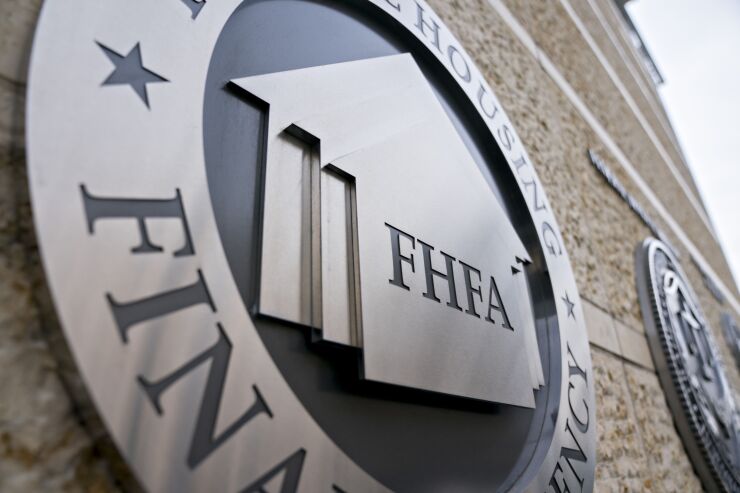Rising interest rates are forcing some community banks to make market adjustments that could restrict funding from the Federal Home Loan banks, prompting some bank trade groups to warn of a potential liquidity crisis going forward.
Roughly 100 community banks are expected to report negative tangible capital on call report data that is due at the end of October, experts said. Banks reporting negative tangible capital are required to get a waiver in writing from their prudential regulator in order to access low-cost advances from the Federal Home Loan Bank System.
While some bankers are characterizing the issue as a conflict between regulatory rules, the continued rise in interest rates could push more banks to report negative tangible capital going forward.
"It's causing an unnecessary and completely avoidable liquidity issue at some community banks," said David Schroeder, senior vice president of federal government relations at the Community Bankers Association of Illinois.

Tangible capital is the most conservative way to look at a snapshot of a bank's financial health, though many other measures are used as well. Banks are required to measure the fair value of their investments on call report data submitted to prudential regulators. Due to higher interest rates, some banks are reporting mark-to-market adjustments on investments held in portfolio — typically high-quality Treasuries and mortgage-backed securities — that are resulting in unrealized losses.
The mark-to-market adjustments are bucking up against a rule enacted by the Federal Housing Finance Agency in the aftermath of the savings and loan crisis. The FHFA's
"Examiners recognize the rate environment and are not making an issue of the unrealized losses," said Jim Amundson, president and CEO of Bank In Minnesota, a 60-year-old bank trade group formerly known as the Independent Community Bankers of Minnesota. "It's been a long time since we've had this kind of increase in interest rates this quickly, and that's why it's magnified at this point."
With the Federal Reserve
"The timing is important, and it needs to be done in the next 30 to 60 days," said Schroeder, whose Illinois bank group has roughly 300 members. "With the continued increase in interest rates, this problem is going to get worse."
Community bankers have urged the FHFA to consider issuing an interim final rule to waive the requirements of its tangible capital rule in the short term while the agency considers a more permanent fix. The FHFA's tangible capital rule dates back to 1994, but in 2013 prudential regulators finalized Basel III capital rules that changed the regulatory framework for how tangible capital is calculated, resulting in inconsistency between the FHFA's rules and those of other bank regulators.

"The easiest way to fix this is for FHFA to align its tangible capital rule with banking agencies," said Ron Haynie, executive vice president at the Independent Community Bankers of America.
The vast majority of institutions are well capitalized with total risk-based capital in excess of 10% —a critically undercapitalized bank is defined as one with less than 2% tangible capital. When banks' capital levels decline, prudential regulators typically take prompt corrective action with restrictions that kick in depending on a financial institution's capital level. Banks that are undercapitalized can be restricted from a variety of activities including from accepting brokered deposits, making dividend payments, paying bonuses and opening or closing branches, experts said.
The FHFA, which oversees the Federal Home Loan banks, declined to comment. The Federal Deposit Insurance Corp. also declined to comment.
The issue is complicated by the fact that the FHFA follows generally accepted accounting principles, known as GAAP, while prudential regulators use regulatory accounting principles. It is far from clear whether prudential regulators — including the FDIC, the Federal Reserve and the Office of the Comptroller of the Currency — will agree to waivers that would allow a bank with negative tangible capital to tap Home Loan bank advances.
Banks typically tap Home Loan bank advances at one-year, two-year and five-year terms. Limiting that funding to 30-day periods would cause some heartburn for small banks, Amundson said, and that stress is not reflective of weak capital positions among banks affected.
"This is not a capital crisis for community banks, in and of itself," Amundson said.





